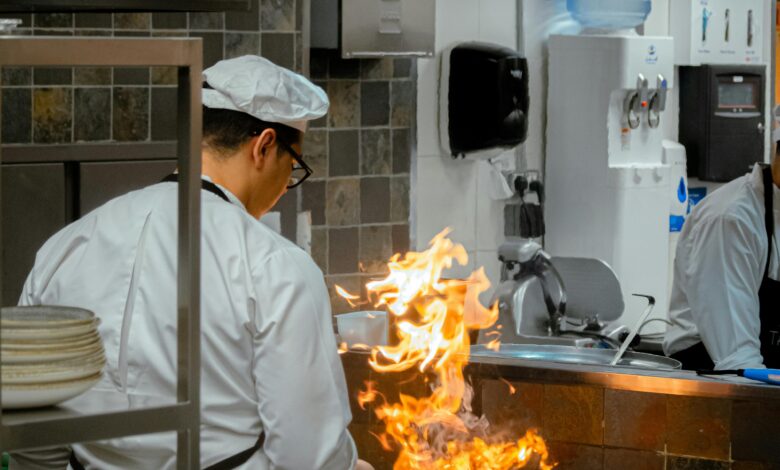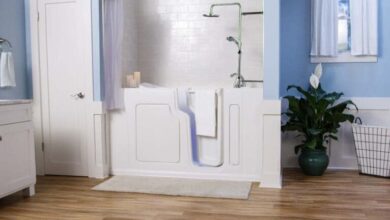Why Fire Damper Maintenance Belongs on Your Kitchen Safety Checklist

In commercial kitchens, fire safety is a constant priority. From deep-fat fryers to extraction systems, high-risk equipment is everywhere, and the consequences of poor maintenance can be severe. One critical element that often receives less attention than it deserves is the fire damper. These devices are built into ductwork to prevent the spread of fire and smoke between compartments. When properly maintained, they support a safe working environment, protect property and help businesses meet strict legal standards.
For anyone managing kitchen safety, fire damper maintenance is not optional. Instead, it is a business-critical item on any safety checklist. Read on to find out more about fire damper maintenance.
What Are Fire Dampers and Why Do They Matter?
Fire dampers are mechanical devices installed within ventilation and extraction ductwork. They are designed to close automatically if a fire breaks out, stopping flames and smoke from travelling through ducts and spreading from one area to another. In commercial kitchens, where heat, grease and flammable vapours are part of daily operations, these passive fire protection systems are critical.
Typically, fire dampers are fitted where ducts pass through fire-rated walls or ceilings. When temperatures rise beyond a safe threshold, the damper activates, usually through a fusible link or a thermal actuator, which causes the damper blade to shut. This helps to compartmentalise the fire, giving people time to evacuate and firefighters time to respond.
Kitchens in restaurants, schools, hospitals and hotels often have complex ventilation systems that span multiple zones or floors. Without effective dampers in place, fire can rapidly move through these channels, turning a contained blaze into a building-wide emergency. Fire dampers are a first line of defence, but only if they are maintained and fully operational.
Legal and Regulatory Requirements for Fire Damper Maintenance
In the UK, there is clear legal guidance on fire damper maintenance. The Regulatory Reform (Fire Safety) Order 2005 places responsibility on building owners and facilities managers to ensure that fire safety systems, including dampers, are inspected and maintained. This is a legal obligation, not a recommendation.
In commercial kitchen settings, TR19 guidelines also apply, especially where ventilation hygiene and fire risk management intersect. TR19 requires ductwork and associated components to be kept in safe, clean, and working order. Fire dampers are part of this system, and their accessibility and condition must be assessed during inspection and cleaning procedures.
Current best practice recommends that fire dampers are tested at least annually. Some environments with high usage or increased fire risk may require more frequent checks. Typically, such work can be scheduled alongside a professional ductwork cleaning. Failure to carry out such maintenance can result in serious consequences. In the event of a fire, if dampers are found to be non-compliant or faulty, insurance claims may be denied, and the responsible party may face prosecution.
How Poor Fire Damper Maintenance Puts Kitchens at Risk
The risks associated with poorly maintained fire dampers are both immediate and severe. Over time, grease, dust and other airborne debris can accumulate in ductwork, particularly in busy commercial kitchens where extraction systems are in near-constant use. This build-up can block the operation of dampers or cause them to fail entirely.
If a fire occurs and the damper cannot close properly, flames and toxic smoke are free to move through the building. This dramatically increases the danger to staff, customers and emergency responders, and can lead to extensive structural damage. In kitchens where duct runs pass through storage areas, back-of-house corridors or neighbouring units, the threat multiplies.
There are also day-to-day consequences. Obstructed or malfunctioning fire dampers may reduce airflow efficiency, leading to poor ventilation, uncomfortable working conditions and higher energy costs. For foodservice operations that rely on consistent extraction performance, this presents an additional business risk that can impact both hygiene and staff wellbeing.
What Should Fire Damper Maintenance Involve?
Maintaining fire dampers involves more than a quick visual check. A proper inspection includes testing the mechanism, known as drop testing, to confirm that it activates correctly. The damper should open and close fully without resistance, and any faulty parts or mechanical issues must be repaired or replaced.
Cleaning is equally important. Dampers should be free from grease and debris that could hinder their movement. In kitchen environments, where oil vapour is drawn into the ductwork daily, it is essential to remove this contamination on a regular basis. Outsourced kitchen maintenance teams should be professionally managed during cleaning sessions so they don’t just clean the damper blades but also the surrounding duct area to prevent obstruction.
All maintenance activities should be documented thoroughly. Reports should include visual evidence, damper condition, test results and any corrective actions taken. This creates an audit trail that can be shared with insurers, fire officers or environmental health inspectors as proof of compliance. Engaging a qualified, insured contractor ensures this work is done safely and to the appropriate standard.
Adding Fire Damper Maintenance to Your Kitchen Safety Checklist
Fire damper checks should be integrated into your kitchen’s wider safety and compliance schedule. These inspections can be carried out alongside canopy cleaning, ductwork servicing and TR19-related hygiene checks. This approach reduces disruption and ensures all ventilation-related safety features are maintained as a single system.
For multi-site operators, such as franchise restaurants or large institutions, standardising this maintenance across locations provides reassurance and simplifies management. It also ensures that no individual site falls behind on essential checks, which can otherwise lead to inconsistencies and gaps in compliance.
Adding fire damper maintenance to your safety checklist helps protect more than just buildings. It protects people, processes and business continuity. It also demonstrates a proactive approach to health and safety, supporting a positive relationship with local authorities, fire safety officers and insurers. In high-risk environments like kitchens, small oversights can have serious consequences. As such, professionally carried out fire damper maintenance is one area where attention to detail truly matters.
Fire Damper Maintenance in Summary
In numerous commercial settings, fire dampers constitute a vital part of a kitchen manager’s fire safety strategy. Regular maintenance from commercial cleaning experts ensures they work correctly when needed, supporting legal compliance, fire containment and safer working conditions. Including them in your routine checks is a straightforward way to protect both lives and livelihoods.




